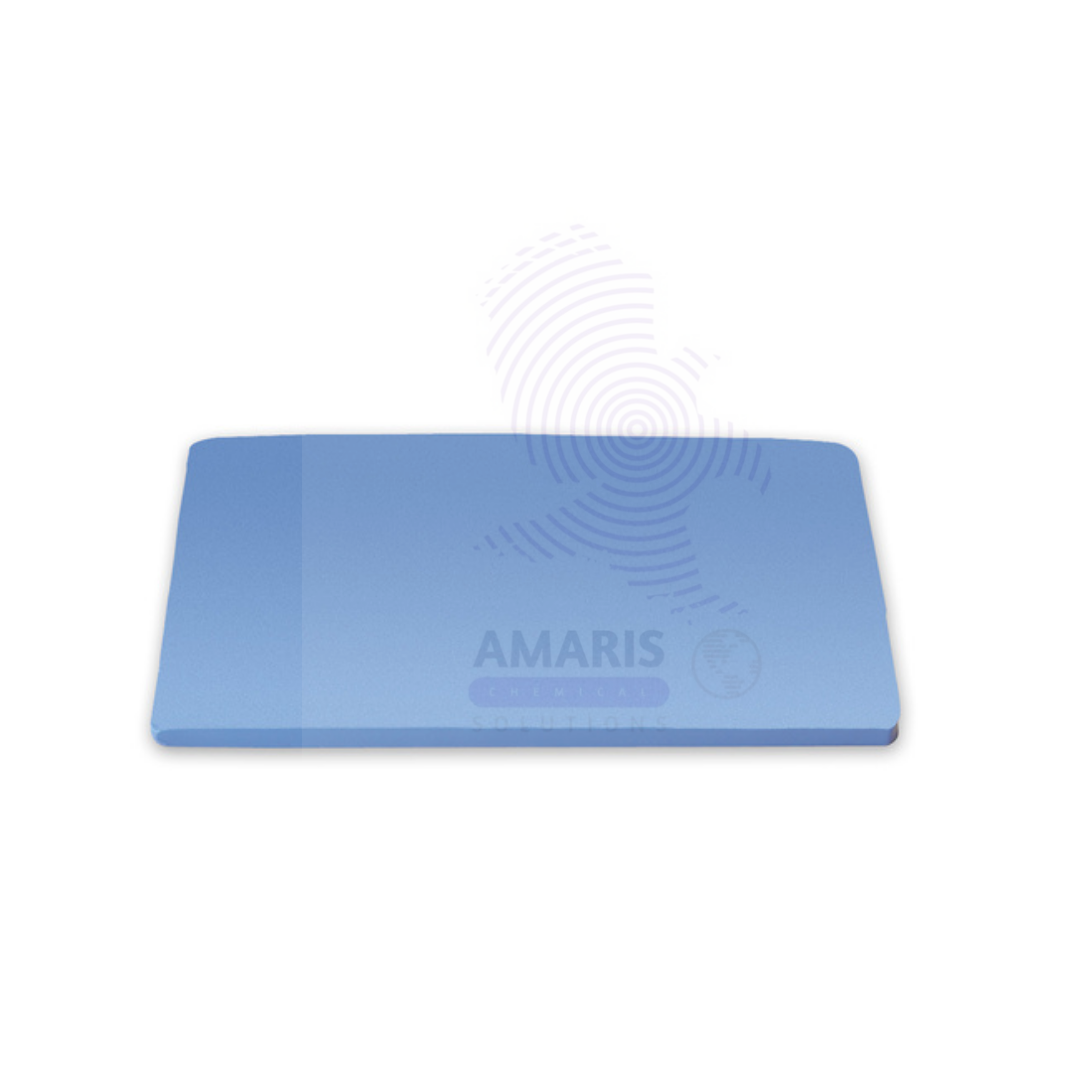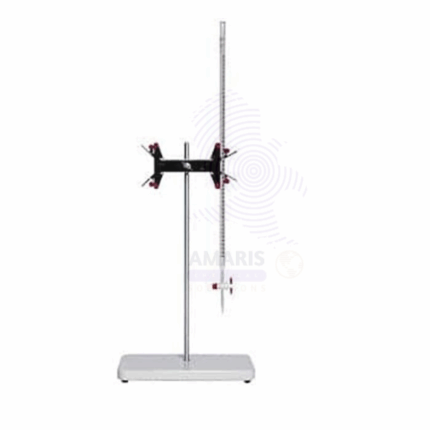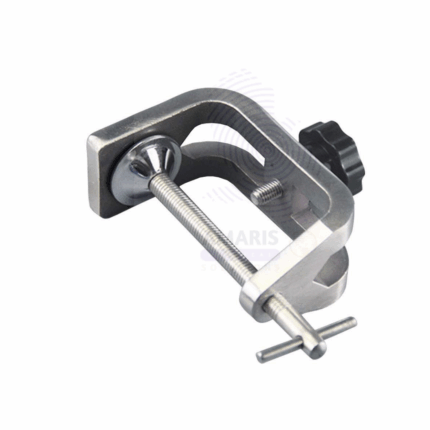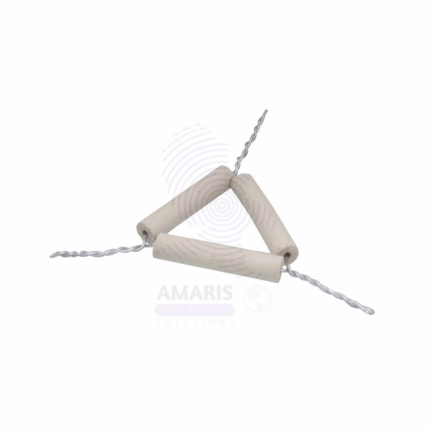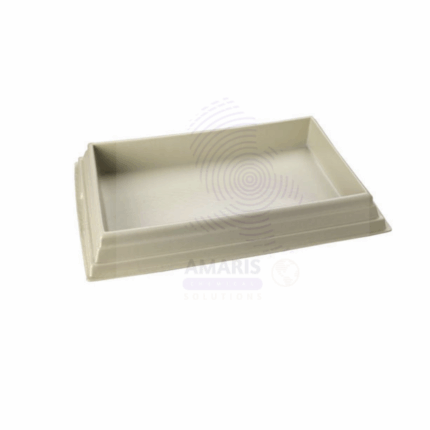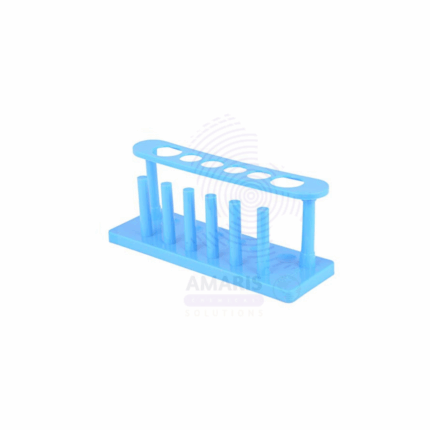“Charts Biology and Chemistry” has been added to your cart. View cart
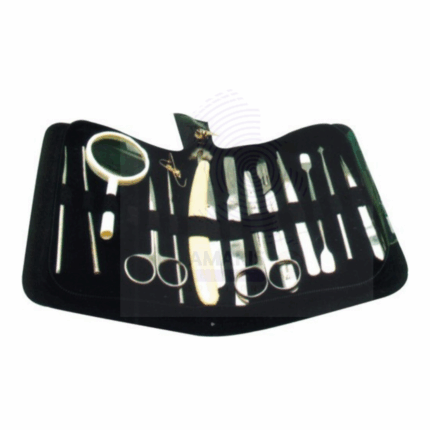
Dissecting Set (Fourteen Instruments)
$ 14.04 Original price was: $ 14.04.$ 13.93Current price is: $ 13.93.
Dissecting Soft Board
$ 30.33 Original price was: $ 30.33.$ 30.19Current price is: $ 30.19.
Whatsapp Order
Dissecting Soft Board is a pliable, cushioned platform used in laboratories and educational settings to securely pin and stabilize biological specimens during dissection. Made from resilient, non-toxic materials such as foam, rubber, or silicone, the soft board provides an ideal surface that allows easy insertion and repositioning of pins without damaging the specimen or the work surface. It enhances precision and control, making dissections cleaner and more manageable. The board is lightweight, easy to clean, and reusable, commonly used in medical, veterinary, and research laboratories.
Description
Table of Contents
Toggle
Dissecting Soft Board
Primary Uses
- Medical and Biological Dissection
- Providing a stable surface for pinning and securing specimens during dissection.
- Allowing precise positioning of tissues and organs for detailed examination.
- Reducing specimen damage by cushioning and absorbing pressure.
- Facilitating educational dissections and demonstrations by improving specimen visibility and handling.
- Supporting surgical training and practice for students and professionals.
Secondary Uses
- Laboratory and Research Applications
- Used in veterinary labs for specimen preparation and examination.
- Assisting entomological, botanical, and zoological dissections requiring specimen stabilization.
- Supporting sample preparation for microscopic or pathological analysis.
- Enhancing forensic examinations requiring delicate specimen handling.
- Serving as a reusable and hygienic platform for multiple dissection sessions.
KEY PRODUCT FEATURES
1. Basic Identification Attributes
- Material: Soft foam, rubber, or silicone with pin-holding capability
- Size: Available in various dimensions to suit different specimen sizes
- Surface: Non-toxic, durable, and easy to clean
2.Physical & Chemical Properties
- Flexible yet firm enough to hold pins securely
- Resistant to chemicals commonly used in dissection and specimen preparation
- Reusable and durable for extended laboratory use
3.Safety & Hazard Attributes
- Non-toxic and safe to handle with standard laboratory precautions
- Minimal risk of injury compared to hard dissecting surfaces
- Must be cleaned regularly to avoid microbial contamination
4.Storage & Handling Attributes
- Store in a clean, dry place away from direct sunlight and chemicals
- Clean after each use with mild disinfectants or detergents
- Inspect regularly for tears or wear that could compromise pin retention
4.Regulatory & Compliance Attributes
- Manufactured in accordance with laboratory safety standards
- Suitable for use in educational, clinical, and research laboratories
6.Environmental & Health Impact
- Made from recyclable or reusable materials depending on type
- Promotes hygienic and environmentally responsible laboratory practices
- Dispose of responsibly when no longer usable
SAFETY HANDLING PRECAUTIONS
Safety Handling Precautions
- Use gloves when handling specimens and cleaning the board
- Avoid sharp objects aside from dissection pins to prevent damage
- Follow cleaning and sterilization protocols as recommended
First Aid Measures
- Minimal risk; if irritation occurs from cleaning agents, rinse skin thoroughly
- For pin punctures, clean wound and seek medical care if necessary
Firefighting Measures
- Generally non-flammable; avoid direct flame contact
- Use appropriate extinguishing agents if board material catches fire
Related products
Complete burette stand
The Complete Burette Stand is a sturdy laboratory apparatus designed to securely hold burettes during titration and other volumetric experiments. Typically made of metal with a stable base, it features adjustable clamps and rods to accommodate different sizes of burettes and provide stability during precise liquid dispensing. Its durable construction ensures safety and accuracy in laboratory workflows.
G Clamp
G Clamp is a versatile clamping tool widely used in woodworking, metalworking, and laboratory applications to hold objects securely in place. Shaped like the letter "G," it features a screw mechanism that allows adjustable pressure to firmly grip materials during assembly, welding, gluing, or testing. Made from durable cast iron or steel, G Clamps offer strong holding power and reliable stability, making them essential for precision work and safety in various industrial, construction, and laboratory settings.
Glass Tubing Cutter File
Glass Tubing Cutter File is a specialized tool designed for scoring and preparing glass tubes before breaking them cleanly. It typically features a hardened steel or diamond-coated cutting surface combined with a file mechanism to smooth and shape the scored area, ensuring precise and controlled glass cutting. This tool is essential for laboratory technicians, glassworkers, and craftsmen who work with glass tubing, enabling safe and accurate customization of glass lengths and shapes.
Laboratory tripod stand
Laboratory Tripod Stand is a sturdy, three-legged support structure used in laboratories to hold and support equipment such as beakers, flasks, and crucibles during heating or experimental setups. Typically made from corrosion-resistant metal, it provides a stable base for apparatus over Bunsen burners or other heat sources. Its design facilitates even heating and secure positioning of lab glassware and equipment during various chemical, biological, and industrial procedures.
PENCIL JOCKEY
A Pencil Jockey is a small laboratory tool designed to securely hold and manipulate pencils or fine writing instruments during detailed drawing, drafting, or note-taking tasks. Commonly used in scientific laboratories, drafting rooms, and educational settings, it ensures precision and comfort during use. Typically made from lightweight, durable
PIPE CLAY TRIANGLES
Pipe Clay Triangles are heat-resistant supports used in laboratory setups to hold crucibles over a Bunsen burner or other heat sources. They consist of three lengths of ceramic (pipe clay) tubing threaded over a triangular metal wire frame, typically made of galvanized iron or nickel-chromium alloy. These ceramic-coated wires provide stable and high-temperature-resistant platforms, allowing crucibles to be heated directly during ashing, calcination, or other high-temperature experiments. Widely used in chemistry labs and educational institutions, they are essential components for supporting small containers while minimizing heat transfer loss or instability.
PLASTIC DISSECTING TRAY WITHOUT WAX
The Plastic Dissecting Tray without Wax is a laboratory instrument used to hold specimens during dissection procedures in biology, zoology, anatomy, and educational labs. Unlike traditional dissecting trays that include a wax layer for pinning specimens, this tray offers a reusable, wax-free surface, typically designed to accommodate separate pinning pads or mats (e.g., rubber or foam inserts). It is made from high-grade, chemical-resistant plastic such as polypropylene or ABS, offering a lightweight, durable, and easy-to-clean platform. The tray typically features raised sides to contain fluids and provide a controlled
PLASTIC TEST TUBE STAND 6HOLE
The Plastic Test Tube Stand 6Hole is a laboratory support accessory designed to securely hold test tubes in an upright position during experimental procedures, storage, or drying. This version features six equally spaced holes, each capable of accommodating standard-size test tubes. Constructed from chemical-resistant, durable plastic such as polypropylene or ABS, the stand is lightweight, stable, and easy to clean. Often used in educational, analytical, and clinical laboratories, it provides a convenient and organized way to manage test tubes during chemical reactions, sample handling, or heating processes. The design may also include drying pegs or smaller side holes for inverted tube drying.


 Preservatives(food)
Preservatives(food) Flavor Enhancers
Flavor Enhancers Acidulants
Acidulants Sweeteners
Sweeteners Antioxidants
Antioxidants Colorants(food)
Colorants(food) Nutraceutical Ingredients (food)
Nutraceutical Ingredients (food) Nutrient Supplements
Nutrient Supplements Emulsifiers
Emulsifiers
 Collectors
Collectors Dust Suppressants
Dust Suppressants Explosives and Blasting Agents
Explosives and Blasting Agents Flocculants and Coagulants
Flocculants and Coagulants Frothers
Frothers Leaching Agents
Leaching Agents pH Modifiers
pH Modifiers Precious Metal Extraction Agents
Precious Metal Extraction Agents
 Antioxidants(plastic)
Antioxidants(plastic) Colorants (Pigments, Dyes)
Colorants (Pigments, Dyes) Fillers and Reinforcements
Fillers and Reinforcements Flame Retardants
Flame Retardants Monomers
Monomers Plasticizers
Plasticizers Polymerization Initiators
Polymerization Initiators Stabilizers (UV, Heat)
Stabilizers (UV, Heat)
 Antifoaming Agents
Antifoaming Agents Chelating Agents
Chelating Agents Coagulants and Flocculants
Coagulants and Flocculants Corrosion Inhibitors
Corrosion Inhibitors Disinfectants and Biocides
Disinfectants and Biocides Oxidizing Agents
Oxidizing Agents pH Adjusters
pH Adjusters Scale Inhibitors( water)
Scale Inhibitors( water)
 Antioxidants(cosmetic)
Antioxidants(cosmetic) Emollients
Emollients Fragrances and Essential Oils
Fragrances and Essential Oils Humectants
Humectants Preservatives
Preservatives Surfactants(cosmetic)
Surfactants(cosmetic) Thickeners
Thickeners UV Filters
UV Filters
 Fertilizers
Fertilizers Soil Conditioners
Soil Conditioners Plant Growth Regulators
Plant Growth Regulators Animal Feed Additives
Animal Feed Additives Biostimulants
Biostimulants Pesticides (Herbicides, Insecticides, Fungicides)
Pesticides (Herbicides, Insecticides, Fungicides)
 Active Pharmaceutical Ingredients (APIs)
Active Pharmaceutical Ingredients (APIs) Excipients
Excipients Solvents(pharmaceutical)
Solvents(pharmaceutical) Antibiotics
Antibiotics Antiseptics and Disinfectants
Antiseptics and Disinfectants Vaccine Adjuvants
Vaccine Adjuvants Nutraceutical Ingredients (pharmaceutical)
Nutraceutical Ingredients (pharmaceutical) Analgesics & Antipyretics
Analgesics & Antipyretics
 Analytical Reagents
Analytical Reagents Solvents(lab)
Solvents(lab) Chromatography Chemicals
Chromatography Chemicals Spectroscopy Reagents
Spectroscopy Reagents microbiology-and-cell-culture-reagents
microbiology-and-cell-culture-reagents Molecular Biology Reagents
Molecular Biology Reagents Biochemical Reagents
Biochemical Reagents Inorganic and Organic Standards
Inorganic and Organic Standards Laboratory Safety Chemicals
Laboratory Safety Chemicals Specialty Laboratory Chemicals(Special Laboratory Equipment)
Specialty Laboratory Chemicals(Special Laboratory Equipment)
 Demulsifiers
Demulsifiers Hydraulic Fracturing Fluids
Hydraulic Fracturing Fluids Scale Inhibitors(oil)
Scale Inhibitors(oil) Surfactants(oil)
Surfactants(oil) Drilling Fluids
Drilling Fluids
 Dyes and Pigments
Dyes and Pigments Bleaching Agents
Bleaching Agents Softening Agents
Softening Agents Finishing Agents
Finishing Agents Antistatic Agents
Antistatic Agents
 Admixtures
Admixtures Waterproofing Agents
Waterproofing Agents Sealants and Adhesives
Sealants and Adhesives Curing Compounds
Curing Compounds Concrete Repair Chemicals
Concrete Repair Chemicals Anti-Corrosion Coatings
Anti-Corrosion Coatings
 Surfactants(cleaning)
Surfactants(cleaning) Builders
Builders Enzymes
Enzymes Solvents (Cleaning)
Solvents (Cleaning) Fragrances
Fragrances
 Electronic Chemicals
Electronic Chemicals Catalysts
Catalysts Lubricants
Lubricants Photographic Chemicals
Photographic Chemicals Refrigerants
Refrigerants Automotive chemicals
Automotive chemicals Pyrotechnic Chemicals
Pyrotechnic Chemicals
 Biodegradable Surfactants
Biodegradable Surfactants Bio-based Solvents
Bio-based Solvents Renewable Polymers
Renewable Polymers Carbon Capture Chemicals
Carbon Capture Chemicals Wastewater Treatment Chemicals
Wastewater Treatment Chemicals
 Pigments
Pigments Solvents(paint)
Solvents(paint) Specialty Coatings
Specialty Coatings Binders/Resins
Binders/Resins Additives
Additives Driers
Driers Anti-Corrosion Agents
Anti-Corrosion Agents Functional Coatings
Functional Coatings Application-Specific Coatings
Application-Specific Coatings
 Fresh Herbs
Fresh Herbs Ground Spices
Ground Spices Whole Spices
Whole Spices Spice Blends
Spice Blends Dried Herbs
Dried Herbs
 Leavening Agents
Leavening Agents Dough Conditioners
Dough Conditioners Flour Treatments
Flour Treatments Fat Replacers
Fat Replacers Decoratives
Decoratives Preservatives(baking)
Preservatives(baking)
 Plasticizers & Softeners
Plasticizers & Softeners Reinforcing Agents
Reinforcing Agents Adhesion Promoters
Adhesion Promoters Vulcanizing Agents
Vulcanizing Agents Antidegradants
Antidegradants Blowing Agents
Blowing Agents Fillers & Extenders
Fillers & Extenders Accelerators & Retarders
Accelerators & Retarders